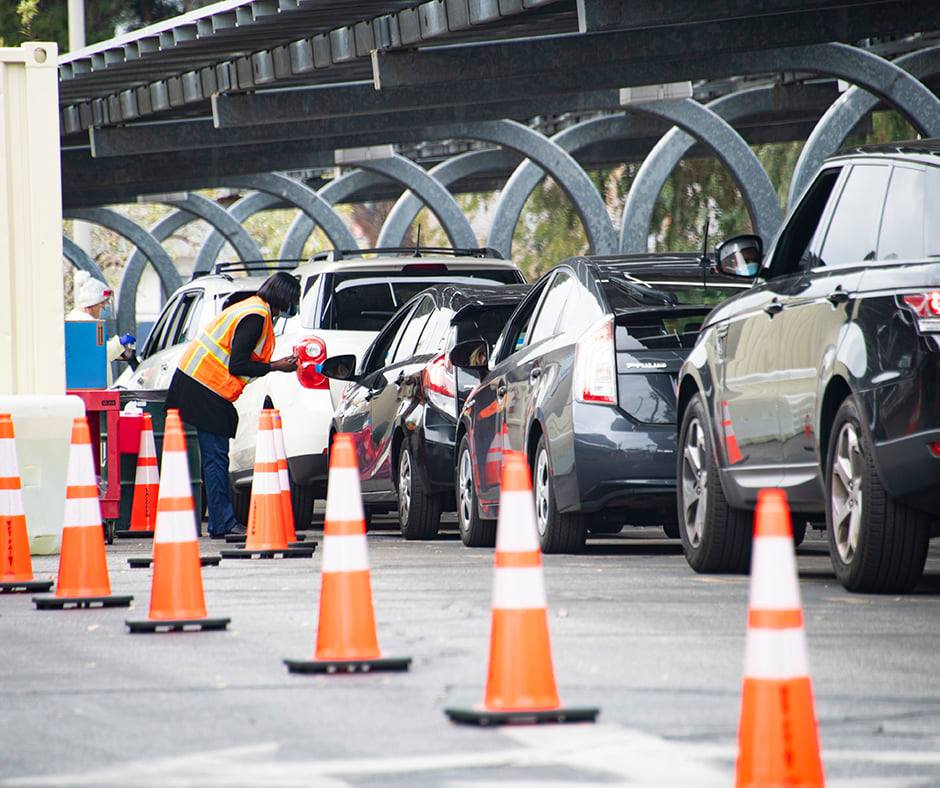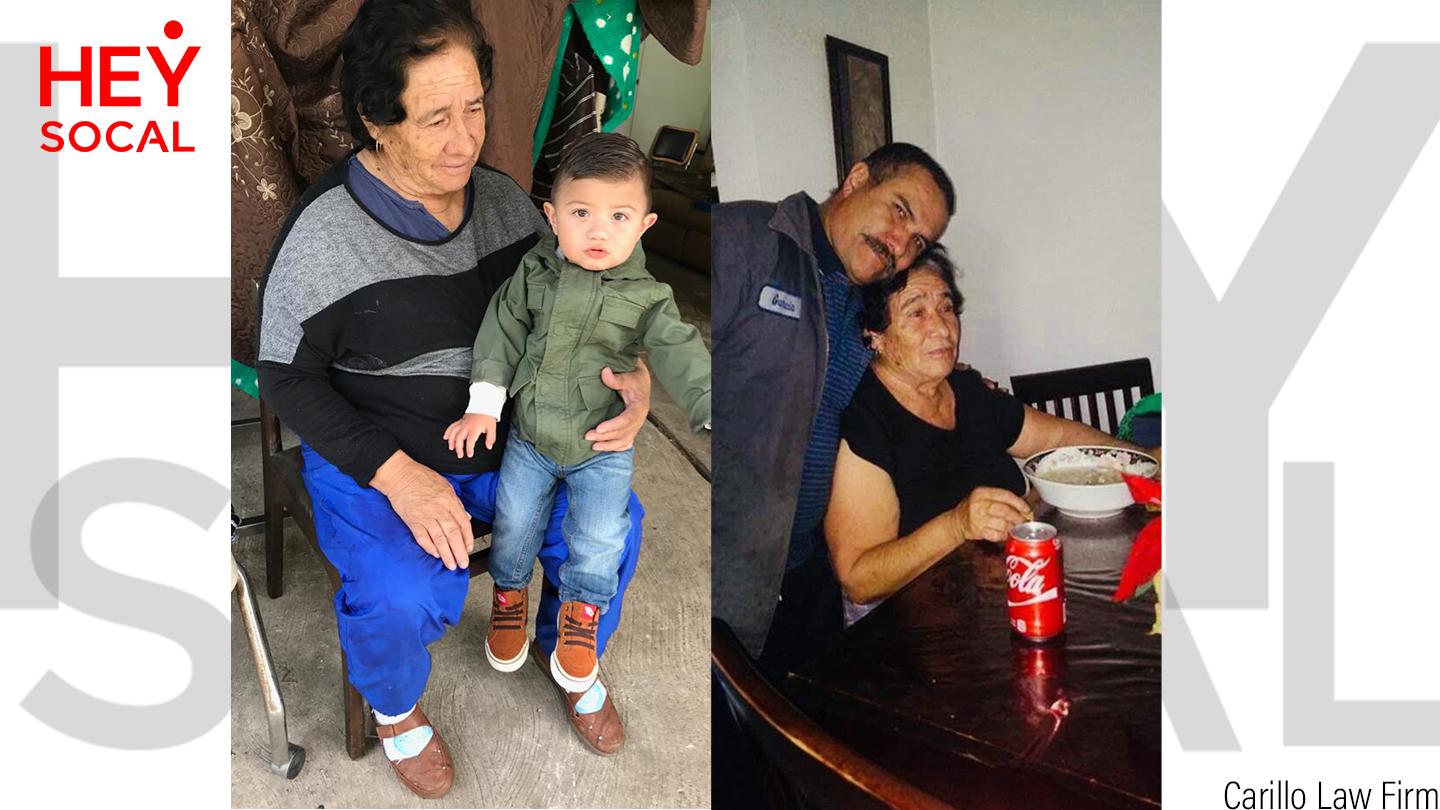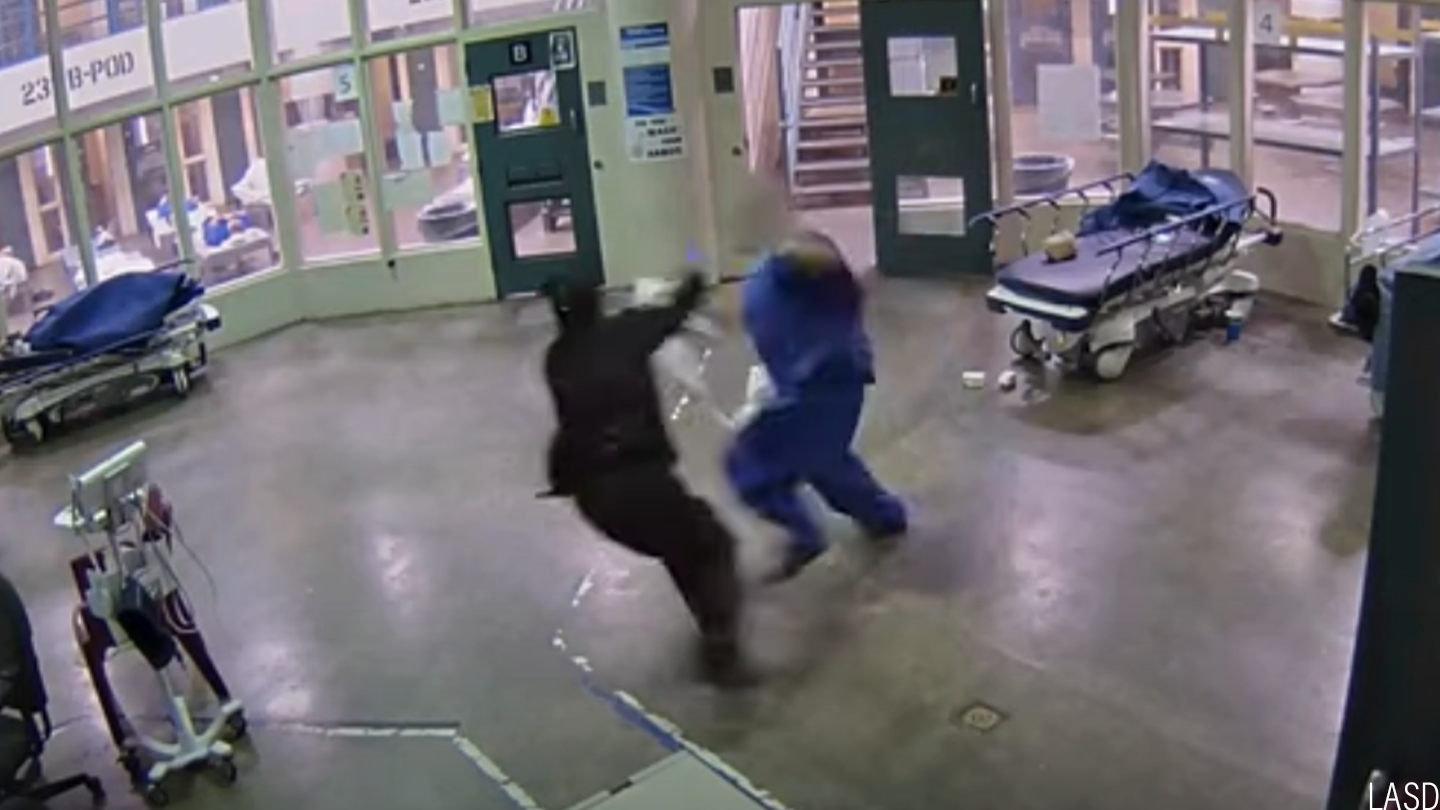Despite a recent sharp decline in demand for COVID-19 vaccines, Los Angeles County plans to continue operating its large-scale vaccination sites while also stepping up outreach efforts in communities where the inoculations have lagged, the county’s public health director said.
While health officials in Orange County announced Thursday they will be closing mass-vaccination facilities due to dropping demand, Los Angeles County Public Health Director Barbara Ferrer said L.A. sites will remain open — though they have been slightly downsized to “occupy a smaller footprint.”
Ferrer said the county does not want to prematurely close the large-scale sites without ensuring the communities in which they’re located will still have easy access to vaccinations. She also noted that the federal government could open vaccinations to youth age 12-15 as early as next week, potentially increasing demand for the Pfizer vaccine, which has cold-storage requirements the county is equipped to meet.
“So that will play into our decision as well,” she said. “I don’t think we have any intent at this moment to close any of our sites. What we’re doing is, we’re looking very carefully at how many doses we’re administering at those sites, but also what role we’re playing in the community. Who’s coming? If we were to close that site, how easy is it for somebody to go somewhere else to get their vaccines?”
She added that the county sites are still administering about 1,000 vaccinations a day.
“That’s a lot of vaccines,” she said. “So before we close anything or even think about closing anything, I want to make sure that there’s plenty of places within a mile or two of where we are where people can continue to get vaccinated.”
Ferrer reported earlier this week that vaccine administration had dropped by about 25% in a one-week period, raising concerns that demand for the shots in the county had peaked. As of Sunday, just 39% of county residents have been fully vaccinated — 67% among residents age 65 and older and 33% among those 16 to 64.
She stressed again that it’s uncertain exactly what percentage the county will need to reach to achieve so-called “herd immunity,” but the goal is to get the number as high as possible. Health officials have said previously they were targeting an 80% vaccination rate.
The county on Thursday officially relaxed its coronavirus-related business restrictions to reflect its move this week into the least-restrictive yellow tier of the state’s Blueprint for a Safer Economy. The county advanced to yellow this week when state figures showed the county’s average rate of daily new COVID-19 infections had fallen to 1.6 per 100,000 residents, down from 1.9 last week.
Reaching the yellow tier requires a county to have a new-case rate less than 2 per 100,000 residents and maintain that level for two consecutive weeks.
Entering the yellow tier primarily allows higher capacity limits at most businesses. Under state guidelines being followed by the county, fitness centers, cardrooms, wineries and breweries can increase indoor attendance to 50% of capacity, up from the current 25%; bars can open indoors at 25%; outdoor venues such as Dodger Stadium can increase capacity to 67%, up from the current 33%; and amusement parks can allow 35%, up from 25%.
Restaurant capacity remains at 50% indoors, but the new restrictions allow restaurants, bars and breweries to turn on their television sets — indoors and outdoors. The new rules will also allow outdoor live entertainment at restaurants, bars, breweries and wineries.
Counties are permitted to impose tougher restrictions than the state allows, and Los Angeles County has done so occasionally during the pandemic. But Ferrer said Monday the county would largely align with state yellow-tier guidelines, but there were some exceptions.
Rules announced by the county restrict capacity at indoor museum, zoo and aquarium spaces to 75%. State guidelines have no capacity restrictions for such facilities in the yellow tier.
The county is also maintaining a 75% capacity cap at grocery and retail stores, a departure from state guidelines that lift all capacity limits in the yellow tier. Hair salons, barber shops and personal care businesses are also limited to 75%, also a departure from the state rules.
Los Angeles is the only Southern California county to advance to the yellow tier. The rest of the region remains in the slightly more restrictive orange tier.
Asked why L.A. appears to be outpacing neighboring counties in reducing case rates, Ferrer credited residents and businesses for adhering to health guidelines. But she also said the winter surge in infections is also a contributing factor the current low case numbers.
“We had a devastating surge here with huge numbers of people that got infected, and many of those people are still carrying around some natural immunity,” she said.
“The unfortunate thing about that natural immunity is that it is going to wane over time. It’s really important that people know that, yes, you have some protection if you were already infected, if you already got sick. But that protection diminishes fairly quickly over time. And that’s why we urge everybody who’s already been infected to come in and get vaccinated. But certainly for now, I think it has helped us in the spring keep our numbers down.”
The county on Thursday announced 19 new COVID-19 deaths. The new deaths increased the countywide death toll since the pandemic began to 23,966.
The county also reported another 414 COVID cases, while Long Beach reported 32 and Pasadena four, bringing the overall pandemic total to 1,234,782.
According to state figures, there were 376 people hospitalized due to COVID in the county as of Thursday, down from 387 on Wednesday, with 84 people in intensive care, down from 93 Wednesday.







